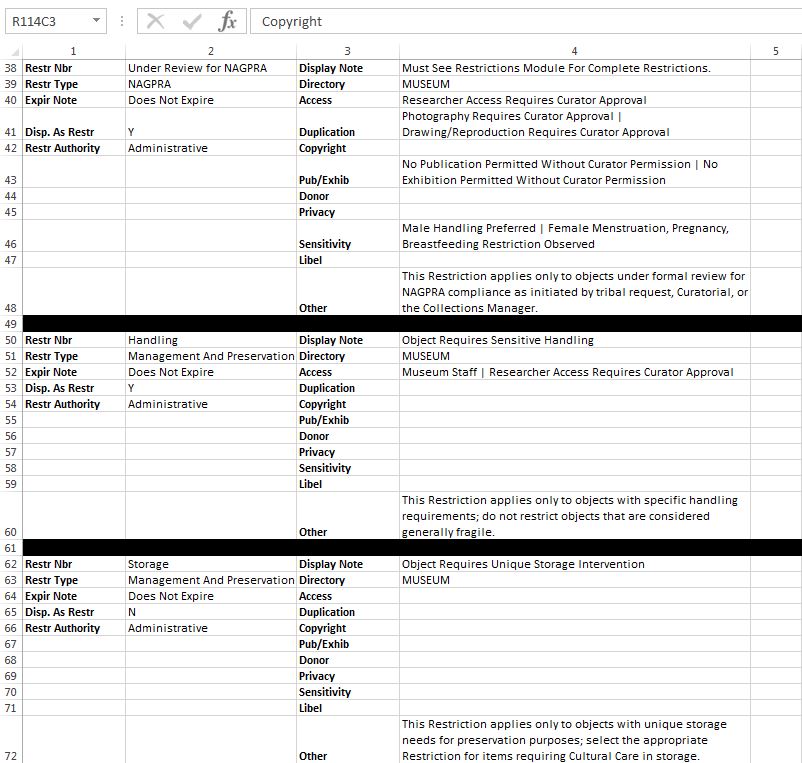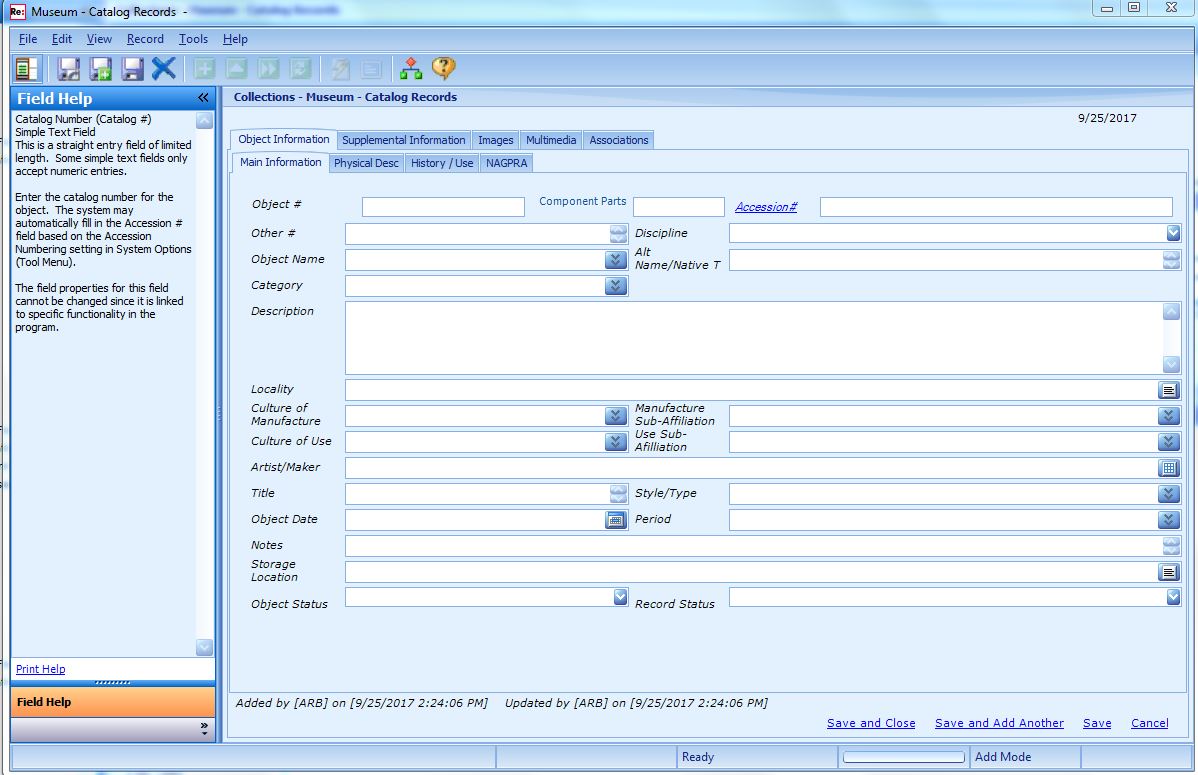Cataloging and Databases
I have nearly four years of experience working with relational databases for museum collections. I am proficiant in EMu, Re:discovery, ICMS, Specify, and PastPerfect softwares, and am comfortable using the systems to to catalog, track, and research items.
Database Standardization and Development
With the 2020 conversion in CollectiveAccess, a large portion of my recent work has been to work within the system to create new workflows, standarize data in the new environment, and customize it as needed for our data and uses. This includes rethinking our data to decolonize our work. For example, I have implemented new protocols for capturing Culture question who applied the label, when, and what their authority was to do so. Additionally, in advance of taking our data online in the future, I am setting up the system to better organize local scripts, names, and autonyms, to prioritize communities.
In 2016 I worked on a database conversion project into Re:discovery Proficio, and was put in charge of managing new data standards and authority table values. I developed the locked vernacular for every cataloging field and defined the use of those fields, based off a survey of the existing catalog records and a determination of the needs of the records. I sought input from outside institutions on ways to streamline, simplify, elucidate the terms utilized in our collections database. T



Screenshots of development process for authority values, CUMNH 2017
Cataloging Protocol and Procedures
For both CollectiveAccess and Re:Discovery, I wrote new protocol for cataloging and navigating the systems. This included defining the use of each field and the relationship between modules. Such protocols ensure the consistent use of the interfaces, and reduce the confusion for new users. Writing these protocols is also an ideal way to think through use-case scenarios and address needs before they occur mid-project. For example, by thinking critically through the various ways Re:Discovery allows users to relate objects/records, we avoided users creating inconsistencies and unknown links later, and were able to use the system to its full potential.
Object Labeling
I am trained and comfortable in multiple types of object labeling, and have learned when one method may be preferred over another. At the Midwest Archeological Center I was asked to label every piece of a 500+ ceramic sherd collection heading out on loan; I became very adept at using a quill pen on rough surfaces and writing on pieces the size of a thumbnail. At Harpers Ferry National Historic Park I stitched linen labels into period clothing pieces. Recently I have been labeling fossils in the Invertebrate Paleontology collection at CU Museum of Natural History, experimenting to find what solution of B-72 in acetone best adheres the paper labels.
DMNS Cataloging Project
During my summer as the Robert Akerley Intern in the Anthropology Department at the Denver Museum of Nature and Science I processed and cataloged a 300+ piece accession, comprised of prehistoric North American lithics. This allowed me to see a large project through from beginning to end. Another intern and I labelled and photographed each piece, and I entered each into the museum's collections database, EMu. The ability to stick with the project over the whole summer allowed me to get continually better at the cataloging process, and to develop useful standards for the collection.
